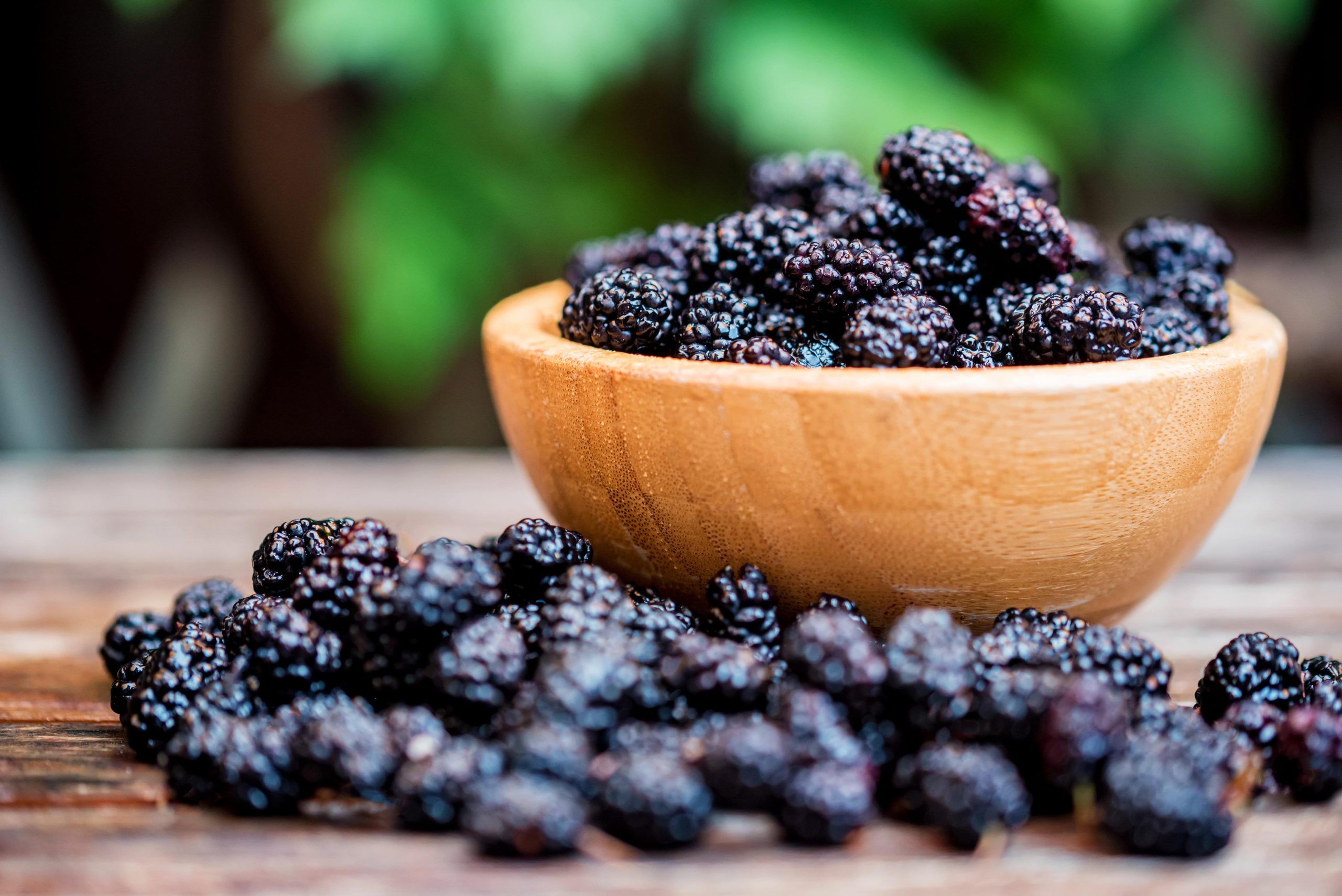Rarely Seen, Mulberry Fruit Turns out to be Rich in Benefits

Mulberry and its origin
Mulberries are long-shaped fruits that may look similar to blackberries. At a glance, mulberries and blackberries have the same dark color when ripened and have similar bumpy surfaces. It is not rare that both of these fruits are mistaken for one another.
But mulberries, along with blackberries, are not true berries. Both fruits are not botanically classified as a berry, but rather an aggregate of many tiny fruit clusters arranged around a central stem. Mulberries belong to the Moraceae family, also called the mulberry or fig family. Although there are around 100 different documented species of mulberries, there are three main and more common species of mulberries that are available. That is the Morus rubra, Morus Alba, and Morus nigra.
The Morus rubra, commonly known as the red mulberry, is native to eastern and central North America. While Morus nigra, commonly known as black mulberry, is native to Western Asia. Lastly, the Morus Alba or commonly known as white mulberry is native to northern China and has been cultivated in various places with a tropical or subtropical climate.
The Morus Alba is the most common species of the mulberry tree in Indonesia and other parts of Southeast Asia for its use in cultivating silkworms. The leaves of mulberry trees, especially the Morus Alba or white mulberry trees, is a traditional and the only food that silkworm would eat. Looking at the fruit, some might say that it resembles silkworms with its long shape and hair-like fur on the surface of the fruit.
Key things to note when consuming mulberries is that it has sap that can be toxic and causes a skin rash. When digested, the unripe fruit and milky sap can cause gastrointestinal distress and some toxicity that results in hallucination. But other than that, mulberries are perfectly safe and delicious to consume after they ripen.
Benefits of mulberry for health
Mulberries are often made into fruit juice, tea, jam, dried, or canned food. It has a good balance of sweet and tart flavors, sometimes with a hint of baking spices or woody cedar. The mulberries are also syrupy, fragile, and are known to stain when touched.
Fresh mulberries consist of 88% water and only have 60 calories per cup, according to Healthline. The high content of water also makes fresh mulberries not last very long and susceptible to going moldy or mushed. But when they are fresh, mulberries offer a delicious, juicy bite that provides 9,8% carbs, 1,7% fiber, 1,4% protein, and 0,4% fat. While it offers 70% carbs, 14% fiber, 12% protein, and 3% of fat when it is dried, a more common and typical way of enjoying this fruit.
Mulberries are also rich in vitamins and minerals, particularly vitamin C and iron. Other minerals include vitamin K1, potassium, and vitamin E. Vitamin K1, also known as phylloquinone, is important for blood clotting and bone health. Potassium may help lower blood pressure and reduce the risk of heart disease. And lastly, vitamin E is an antioxidant to protect against oxidative damage.
Health benefits of consuming mulberry include reducing cholesterol levels, improving blood sugar control, and reducing cancer risk. Mulberries help to reduce cholesterol by reducing excess fat and improving the ratio between LDL (bad) and HDL (good) cholesterol. While the compound 1-deoxynojirimycin (DNJ) contained in mulberries, inhibits an enzyme in the stomach that breaks down carbs. Making mulberries beneficial against diabetes by slowing down the increase in blood sugar after meals. And lastly, the antioxidants contained in mulberries can help to induce oxidative damage in cells and tissues, which is associated with increased cancer risks.
Mulberry cultivation and fertilizer recommendation
The mulberry tree is classified as a fast-growing, short-lived plant and has a typical height of 10-20 m. It is notably known to have very prolific, fast-growing roots along with the rapid release of its pollen. In some regions, this plant can be considered a very invasive plant. The constant spreading of its pollen along with the fruit itself attracts birds that would end up carrying and dropping the seeds around the region.
Cultivating mulberry plants can be similar to other fruit plants. It can thrive in both full or partial sun, though more sun typically results in more fruits. The plant is also adaptable to various types of soil like clay, loam, or sand, as long as it has good drainage. And as with other fruit trees, mulberry trees require deep and regular watering after initial planting to help establish a strong root system
One thing that might need to take note of when planting mulberry trees is to time the pruning when the plant is dormant. Pruning is beneficial for the plant to promote growth. In the case of some fruit trees, it helps to make way for sunlight to stream in between the leaves onto the plants, helping them properly ripen. But in the case of the mulberry tree, pruning can stress the plant, disrupting the forming of fruits. Pruning the mulberry tree while it’s dormant can also help to avoid sap loss.
The mulberry tree is considered a relatively low-maintenance fruit tree that, as previously mentioned, has fast-growing roots. With this, keep in mind to place the plant away from any important structure or plumbing as it can cause slight damage. Or when planting in a container, it is recommended to plant them in a big container that allows the roots some space to spread out.
Depending on the soil condition, mulberry trees may require annual fertilizer with a balanced 10-10-10 mixture or more frequent if planted in a container. Whichever one it is, make sure to use a good quality fertilizer that is suitable for fruit trees.
